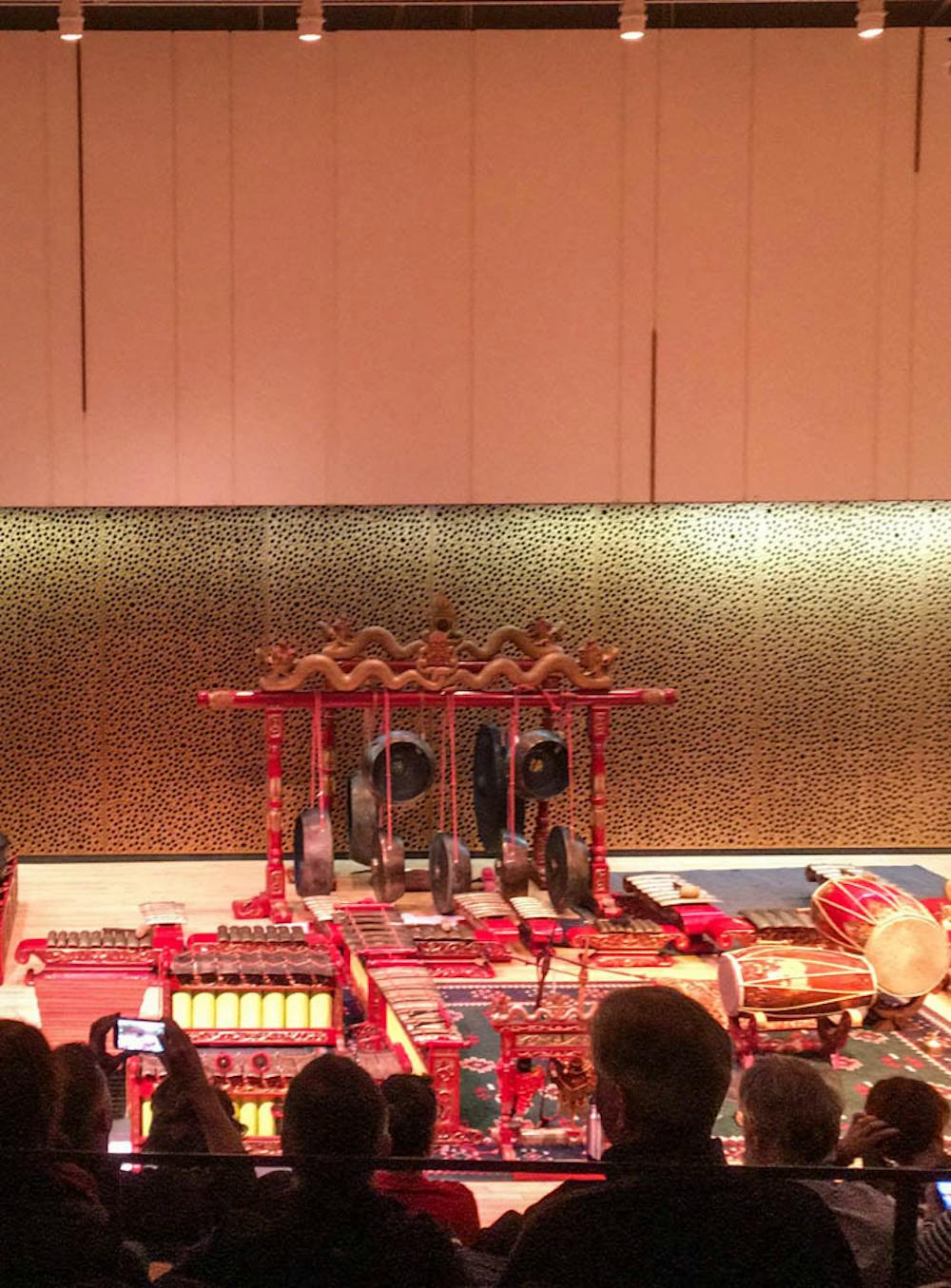Tuesday evening, musicians, students and Providence community members gathered in the Grant Recital Hall for a performance of traditional Javanese Gamelan, a music form from Indonesia that is centered around an ensemble of bronze percussion instruments, often accompanied by vocalists and dancers. The instruments include hand-played bronze drums, xylophones and gongs — some of which Associate Professor of Music Marc Perlman said can be “learned in under an hour” and others that he has spent “40 years trying to master.”
Tuesday’s program focused on the instrumental aspect of the craft, with a lineup of well-known gamelan percussion pieces and a new composition by Teaching Associate in Music I.M. Harjito, who is “one of the best Javanese traditional musicians in the world,” according to Perlman. The performers are enrolled in a class on Javanese Gamelan taught by Perlman and Harjito. The class meets Tuesdays in the Orwig Music Center and welcomes the participation of graduate students and Providence community members.
Perlman is a musician and academic who has devoted much of his life to studying gamelan music, publishing popular works of scholarship, such as Unplayed Melodies: Javanese Gamelan and the Genesis of Music Theory. He has been teaching the class since 1998 alongside Harjito, an Artist-in-Residence and teacher at Wesleyan University who has made the trip from central Connecticut to Providence “every Tuesday for 20 years” to help instruct. Perlman and Harjito encourage people who have no background in music or Javanese Gamelan to take the class because the selection of simple instruments allows for students of every skill-level to partake.
One ensemble member, Prateek Joshi ’18.5, had negligible musical experience before deciding to take the class.“I played the piano a long time ago, but I don’t think that counts,” he said.
Joshi had never heard of Javanese Gamelan before this semester but decided to enroll because he wanted to “do something outside of his comfort zone” and “enhance his college experience” before graduation, he said. He has enjoyed the class because the music is “fairly accessible for beginners.” Within a matter of weeks, he was able to learn the saron, a “fairly simple” instrument that resembles a xylophone with seven keys. “It sounds nice on its own, but when you hear it with the ensemble and see how the instruments all come together, you hear something that’s quite beautiful,” he reflected.
Joshi hopes that in the future the class focuses more on the history and culture of the music form, he said. “If we’re going to play the instruments, we can’t do it in a vacuum.”
Katherine Dunham ’19 came to the performance to support Joshi and expressed a similar desire to understand the musical form in its larger cultural and historical context. “I don’t know anything about it!” she said. “But I’d love to learn more.”





